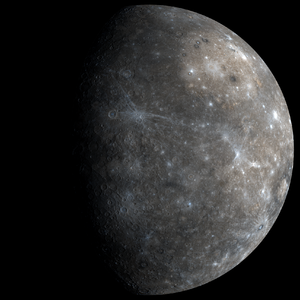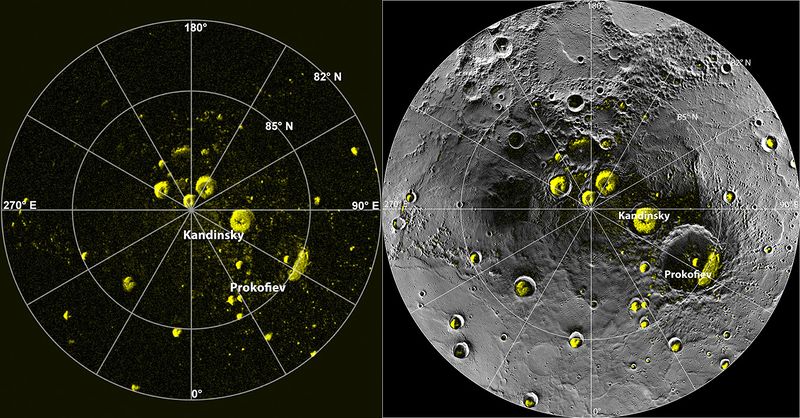Mercury (planet)
Contents
hideExplanation

Mercury is the first planet in the solar system, which is closest to the sun. It is also the smallest planet with the shortest orbital period among the other planets, lasting only 88 earth days. Mercury was initially thought to be tidally locked to the sun. But it was later discovered that Mercury indeed rotates, but slowly. The planet is tidally locked at a resonance due to its elliptic orbit. A sidereal day on Mercury is 58 Earth days, 15 hours, and 30 minutes. A solar day on Mercury is 176 Earth days. For every two orbital rotations around the Sun, Mercury rotates on its axis thrice. The other interesting fact about Mercury is its orbital precession about 43 arc seconds per century, which proves general relativity more practically.
Mercury is the second densest planet in the solar system, with a molten iron core that would make about 1800 km in radius.[1] For comparison, the total radius of Mercury is about 2440 km with a crust about 400 km thick. This molten core generates a strong magnetic field due to the dynamo effect, forming a magnetosphere around the planet.
Frequently Asked Questions
Why does the orbit of Mercury precess?
Almost all the orbits of the planets precess gradually due to the gravitational perturbation of the other planets. In the case of Mercury, the eccentricity of the orbit is different from other planets and Newton's theorem of revolving orbits could not explain it. Newton's theorem could account for the perturbation, Sun's little quadrupole moment and come up with a precession of 5557 arc seconds per century. But the observed precession is 5600 arc seconds per century and was higher by 43 arc seconds. It is proposed that there could be a planet or an asteroid belt beyond Mercury that could be contributing to the eccentricity. Later, as Einstein was able to predict the extra 43 arc seconds with general relativity, it is clear that Mercury is following the curved spacetime around the massive Sun, which results in the observed precession.
Is there water on Mercury?
Mercury is closest to the sun, and due to its slight axial tilt, lack of atmosphere, the surface temperatures are as high as 700 K during the day time at the equator. But the lack of tilt prevents the poles from any direct exposure to the sunlight. The temperature at the poles constantly stays around 180 K and there are regions inside the craters where the temperature could go as below as 120 K. As the surface of Mercury is filled with craters, ground observations using radar mapping at the Arecibo Observatory has shown evidence for the presence of water as ice.[2] NASA later confirmed this from the photographs of Mercury's north pole by the MESSENGER spacecraft. It is believed that water could be formed on Mercury by the numerous comet, meteorite bombardments and the solar winds.

It is also believed that these regions in the shadowed areas could act as a cold trap, which would freeze any of the water or water vapour that escape the planet's interior layers through water outgassing. With all these observations, we can extrapolate that Mercury has water.
